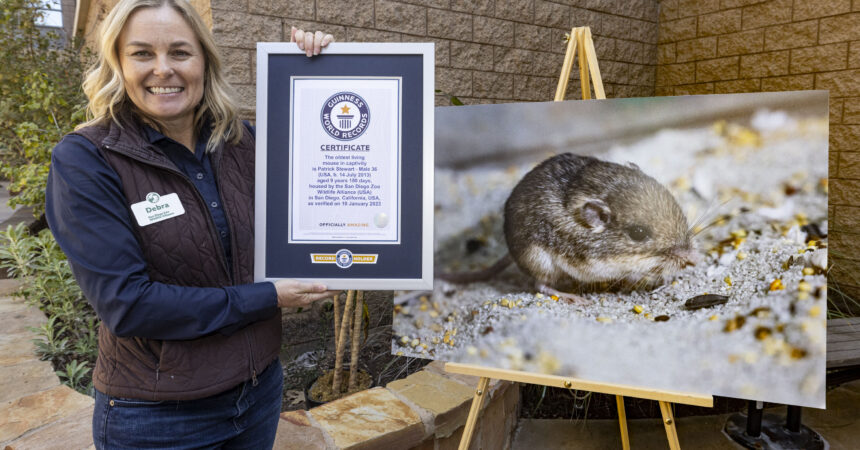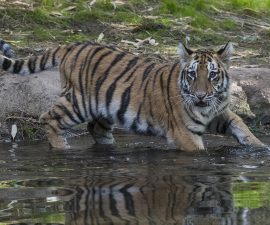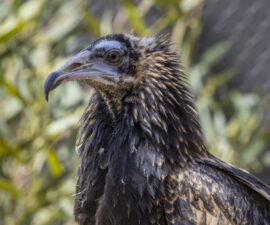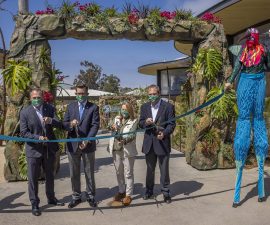There’s a new world record holder at the San Diego Zoo Safari Park. Confirmed in February after months of review, Pat’s title was certified by GUINNESS WORLD RECORDS™. At nine and a half years old, Pat the Pacific pocket mouse is officially the Oldest Living Mouse in Human Care!
The recognition didn’t come easily. GUINNESS WORLD RECORDS receives tens of thousands of applications each year from across the globe, but only a portion are approved. Those odds didn’t discourage our team members who meticulously reviewed medical records, pictures, and guidelines to cement Pat’s place in history.
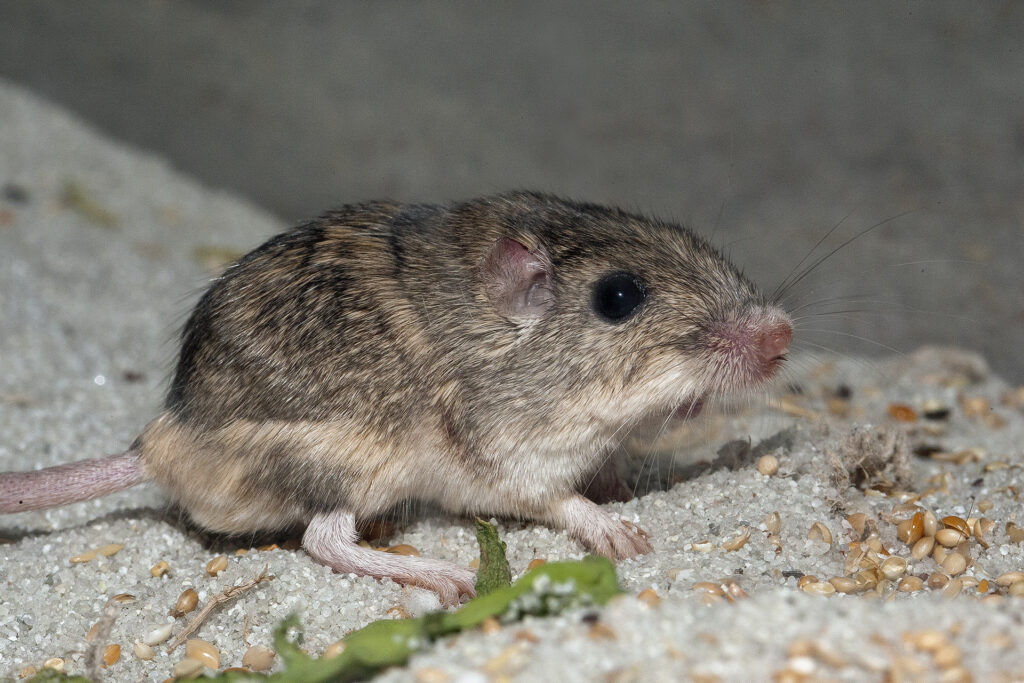
The smallest mouse species in North America, Pacific pocket mice like Pat weigh about the same as three pennies. His body is roughly the size of an adult human’s thumbprint, not including his tail. Being small in stature and in population size has made it easy at times for the tiny mammals to be overlooked. In fact, at one point they were thought to be extinct, but we’ll get to that later.
First, let’s find out how a tiny mouse came to beat a world record! The hum of excitement about the milestone revved up when Pat turned nine last July. That is more than double the average life expectancy of a Pacific pocket mouse in human care, and triple what you find in native habitat. His long life is owed to the world-class care provided by our conservation and wildlife health teams, as they’ve worked for more than a decade to recover Pacific pocket mouse populations.
Pacific pocket mice are endemic to Southern California, meaning they are found nowhere else on Earth. Historically, they inhabited coastal areas from Los Angeles to the Tijuana River Valley. Due to a dramatic population decline, today they are mostly missing from their coastal habitats. There are only three small populations of Pacific pocket mice remaining, two in protected areas on Marine Corps Base Camp Pendleton in Oceanside, and one on Dana Point Headlands, in Dana Point—where Pat’s family lineage has been traced.
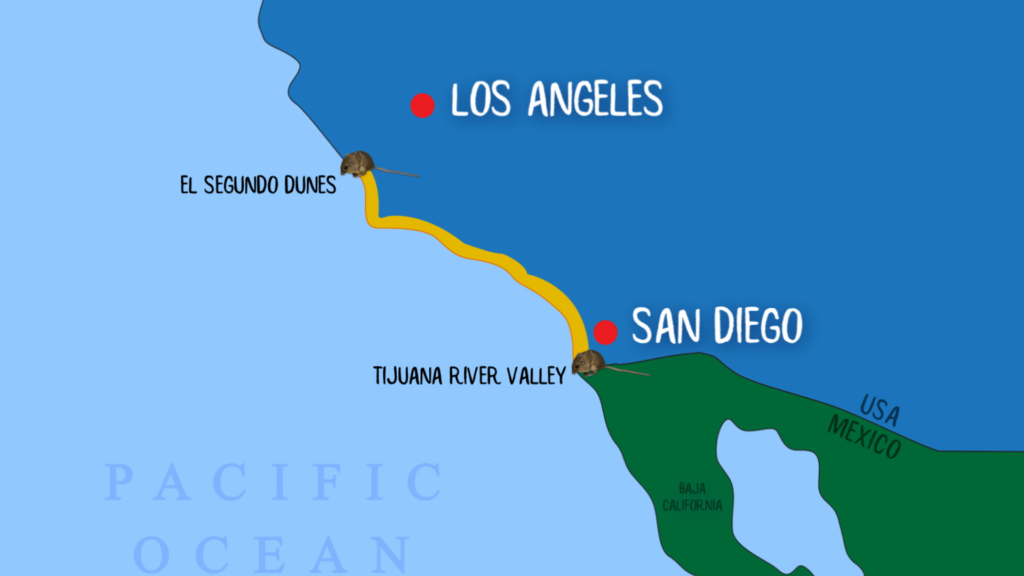
We are committed to securing the future for these tiny and intriguing animals. Since 2012, we’ve been reintroducing the endangered mice to the sandy coastal scrublands where they once thrived. Born at the Safari Park on July 14, 2013, Pat is one of the program’s first pups (newborn mice.) He was affectionately named after Star Trek: The Next Generation and X-Men actor Sir Patrick Stewart. Now Pat, the namesake, is getting his own international spotlight as the longest-living Pacific pocket mouse.
Pat’s history-making record is an opportunity for us all to learn more about a small mouse with a big role in our shared ecosystem, and their amazing story. These nocturnal mice were not sighted in native habitat and were believed to be extinct for more than 20 years. It turned out some Pacific pocket mice survived the coastal development that picked-up in the 1930s. In 1993, a population was discovered at Dana Point.
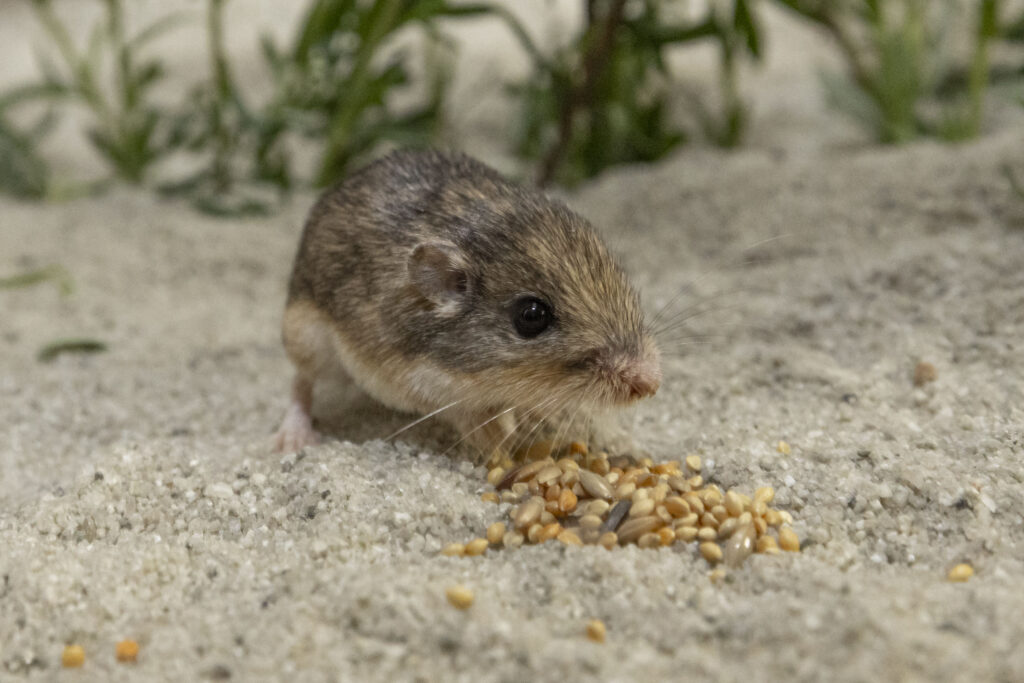
The rediscovery of these mice was good news for both the species and their ecosystem. Pacific pocket mice are great seed dispersers, scattering seeds throughout their habitat. In fact, they have a special adaptation that helps in this process. They store the seeds in pouches in their external fur-lined cheeks, hence how they became known as pocket mice. Our conservation scientists are exploring ways to increase the survival rate of Pacific pocket mice, by studying population differences, genetic diversity, habitat requirements, and more.
Pat’s GUINNESS WORLD RECORDS certification raises vital awareness about the environmental importance of these burrowing mice. We were honored to celebrate him and recognize the dedicated conservation scientists and wildlife care teams who work to save wildlife—no matter how small—each and every day.
“This recognition is so special for our team and is significant for the species. It’s indicative of the dedication and incredible care we as an organization provide for each species, from the largest to the very smallest. This acknowledgment is also a symbol of appreciation for species that people don’t know much about because they’re not charismatic megafauna, but are just as critical for ecosystem function. These overlooked species can often be found in our own backyards—like the Pacific pocket mouse,” said Debra Shier, Ph.D., Brown Endowed Associate Director of Recovery Ecology at San Diego Zoo Wildlife Alliance, as she accepted a plaque commemorating Pat’s significant age.
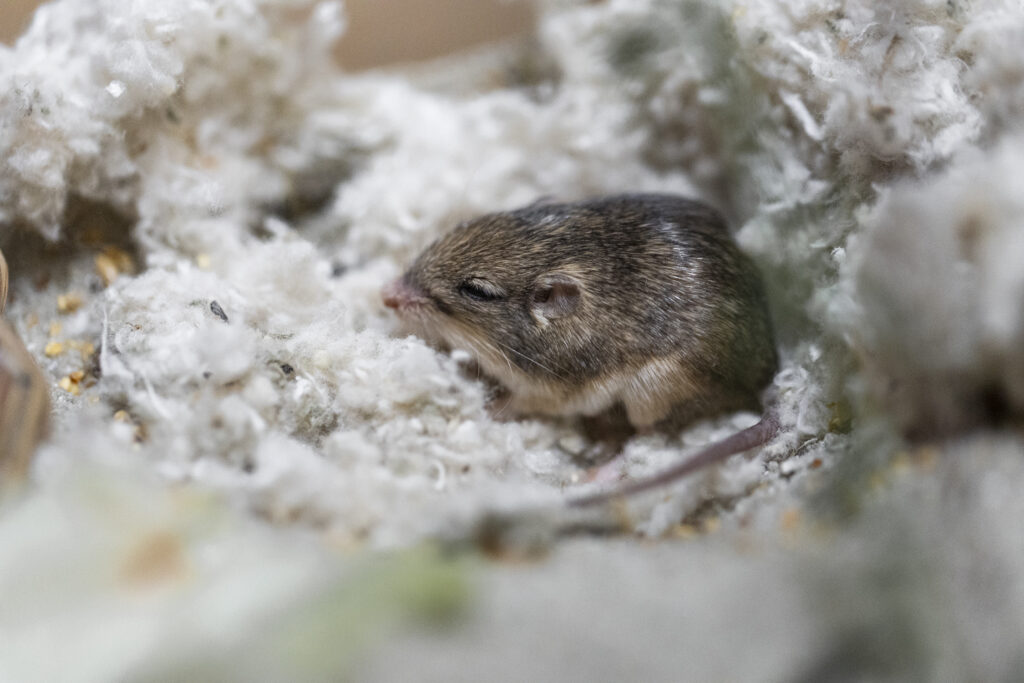
Our Pacific pocket mouse conservation program is an example of how we’re leveraging more than 100 years of caring for wildlife, scientific expertise, and partnerships to find sustainable conservation solutions. Our work is concentrated in eight Conservation Hubs across six continents, in regions where we can have the greatest impact. This includes our own backyard, our Southwest Conservation Hub, a biodiversity hotspot brimming with wildlife unique to the region—including Pacific pocket mice.
Caring for and gathering data about Pacific pocket mice gives us an opportunity to expand our understanding of them. In addition to habitat loss, we know Pacific pocket mice face risks of predation and competition for seeds. And, there’s a connection between droughts and mouse reproduction. Severe drought leads to the lack of food and nutrients, which keeps mice from reproducing. This type of information helps our conservation teams and partners develop solutions to improve the survival rate of Pacific pocket mice like Pat. And every day that Pat continues to thrive, far surpassing previous life expectancy records, he teaches us more about what it takes to help this important species thrive.
Our partners for the Pacific pocket mouse program include California Department of Fish and Wildlife, Center for Natural Lands Management, San Diego Natural History Museum, U.S. Geological Survey, California State Parks, Marine Corps Base Camp Pendleton, U.S. Fish and Wildlife Service, and the University of California, Los Angeles.

